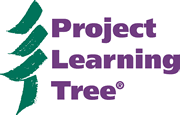As the warm summer months arrive, it’s the perfect time to explore one of nature’s most vital ecosystems–swamps! These lush, biodiverse wetlands play a crucial role in the health of our planet and also offer endless opportunities for fun and learning.
However, despite their importance, swamps and other wetlands are disappearing at an alarming rate due to human activities like development and agriculture. That’s why it’s more crucial than ever to appreciate and protect these remarkable wetlands to preserve their biodiversity and their benefits for our communities.
To do so, let’s take a closer look at the magic of swamps and why we need to protect these vital ecosystems, as well as explore exciting activities for parents and educators to connect learners of all ages with these forested wetlands.
What Is a Swamp?
 A swamp is a wetland area where the ground is saturated with moisture for most of the year, leaving it soggy and mucky underfoot. Many swamps form along rivers, lakes, or lowlands where rainwater collects and has nowhere to drain. The waterlogged soil creates perfect conditions for water-loving plants and creatures.
A swamp is a wetland area where the ground is saturated with moisture for most of the year, leaving it soggy and mucky underfoot. Many swamps form along rivers, lakes, or lowlands where rainwater collects and has nowhere to drain. The waterlogged soil creates perfect conditions for water-loving plants and creatures.
Swamps are lush, wild places filled with twisted cypress trees, whose gnarly growths called “knees” poke up from the water. Other common vegetation includes towering mangroves, verdant mosses, ferns, and flowering plants like water lilies. These wetlands are prime habitats for otters, herons, snakes, alligators, fish, black bears, and more–supporting incredible biodiversity.
Why Swamps Are Important
Swamps are not only cool places to explore but also play incredible roles for the entire planet:
- Flood Control: With water-absorbing vegetation and soggy ground, swamps act like giant sponges, soaking up excess rainwater during storms and preventing floods.
- Natural Filtration: The tightly-packed plant life and rich soils in swamps work as natural filters, removing pollutants, sediments, and excess nutrients from water before it continues downstream.
- Wildlife Habitats: Swamps provide vital shelter, food, and breeding areas for hundreds of species of mammals, birds, reptiles, amphibians, fish, insects, and plants.
- Carbon Capture: Like forests, swamps absorb and store huge amounts of carbon dioxide through their trees and vegetation, helping fight climate change.
Fun Swamp Activities for Learners
Now that we know all about swamps, let’s have some fun! To help learners of all ages connect with and appreciate swamps, try these engaging activities:
Swamp Diorama
Grade Level: K-2, with adaptations for grades 3-5
Create dioramas depicting the flora and fauna of swamp ecosystems using paper plates, paints, rocks, twigs, and moss. Have students include elements like cypress trees with “knees,” mangroves, water lilies, alligators, snakes, herons, and other swamp wildlife. Older students can make more complex box dioramas showcasing the interconnected swamp habitat.
Swamp Food Web
Grade Level: K-5, with adaptations for grades 6-8
Teach students about the interconnections in swamp ecosystems by creating a simple food web. For younger students, guide them in drawing arrows between organisms to show who eats what. Older elementary students can fill out worksheets independently or in groups with the Web of Life activity for grades 3-5 from PLT’s Explore Your Environment: K-8 Activity Guide. While this activity focuses on a forest ecosystem, you can easily adapt it so students research and model a wetlands ecosystem. Lastly, middle schoolers can take a research-based approach to create detailed swamp food webs featuring local species.
Build a Beaver Dam
Grade Level: 1-2, with adaptations for grades 3-8
Explore the role of beavers in creating swamp environments. Lead a STEM challenge for students to build miniature beaver dams using classroom materials or natural items. Discuss how beaver dams block water flow and allow swamps to form. For older grades, cover the engineering aspects and purposes of dams beyond wildlife.
Make Clean Swamp Water
Grade Level: K-2
Demonstrate simple filtration systems using gravel, sand, coffee filters, and plants to clean “dirty” water representing swamp environments. Have students observe the difference and consider unseen contaminants. Prompt older students to think about how to remove microscopic particles to make the water drinkable. You can also try the Water Wonders activity from Explore Your Environment to teach students about the water cycle and how plants and forests are important for maintaining water quality.
Swamp Water Pollution Cleanup
Grade Level: Pre-K
Let young learners get hands-on by removing visible “pollution” like plastic objects from a bin representing a littered swamp. Older students can explore where trash in wetlands originates and how increased water use impacts swamp health.
Benefits of Swamps Research
Grade Level: 6-12
Have students research and present on key benefits provided by swamps, such as flood control, water filtration, wildlife habitats, and carbon sequestration. Explore how losing swamps would impact human communities.
Swamp Species Exploration
Grade Level: 6-12
Investigate unique plant and animal species found in swamps, how their populations are affected by wetland loss, and propose strategies to protect them. Use local examples when possible.
Local Swamp Field Study
Grade Level: 6-12
Locate any swamps in your area and assess their health considering human impacts over time. If possible, take a field trip to observe the swamp firsthand and collect data like water samples. Lead the PLT “Watch on Wetlands” activity for middle school students, where they’ll investigate a wetland system.
No matter what activity you choose, teaching learners about the vital role of swamps and getting them outside in nature is a great way to spend this summer!


